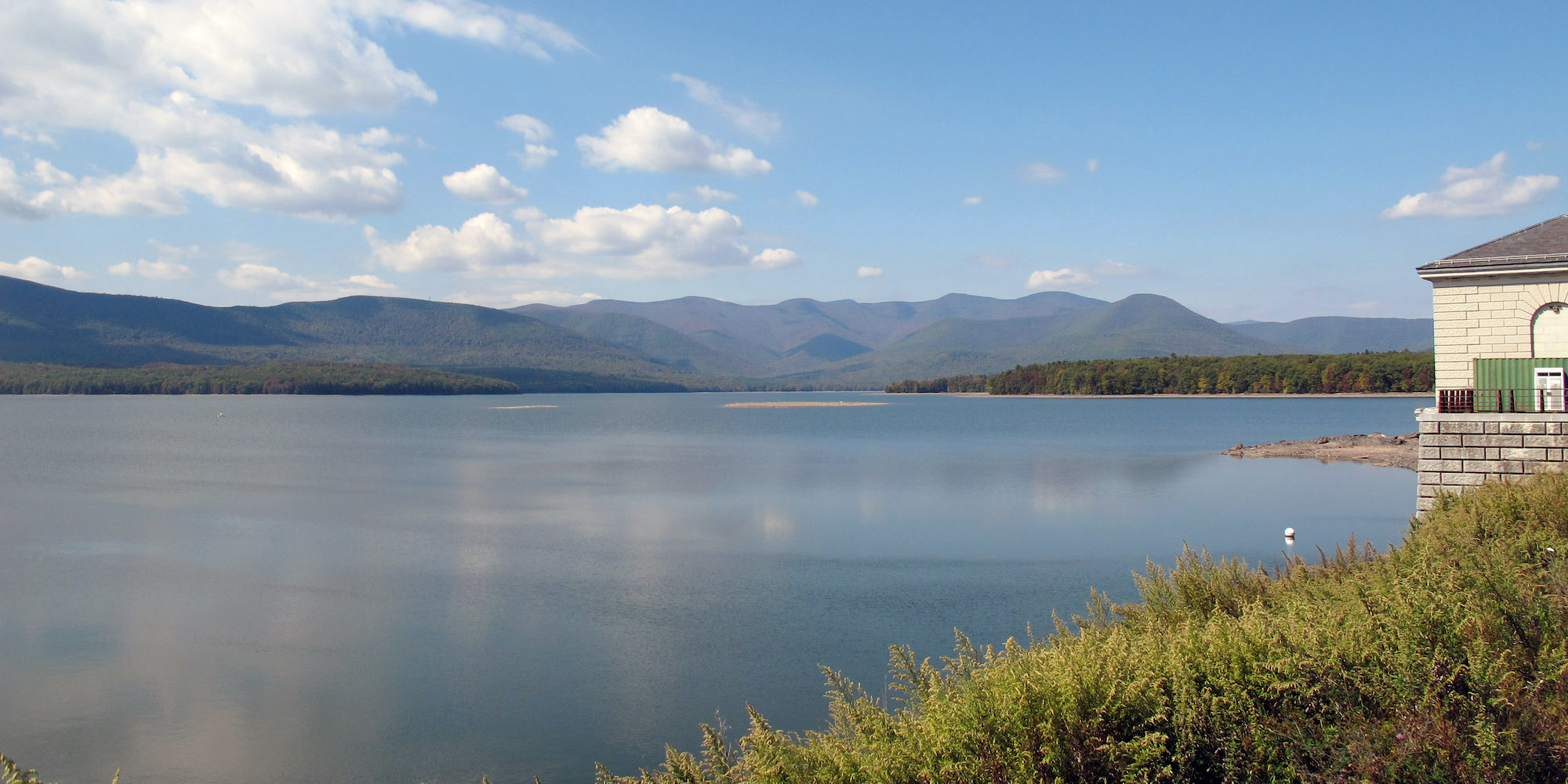- Two hours by car from Manhattan, 40% of New York City’s water supply sits in the pristine Ashokan Reservoir.
- From there, it travels through more than 100 miles of tunnels to reach the city’s 8.4 million residents.
- Remarkably, the Catskill Aqueduct, which brings water from the Ashokan and Schoharie reservoirs, has been in operation since 1915.
- Visit Insider’s homepage for more stories.
In 2016, the New York Public Library released almost 200,000 digitized images, and among them were these incredible photos of the Catskill Aqueduct construction, which began in 1906.
These vintage images show how this engineering feat was completed back then to keep providing clean water to New Yorkers to this day.
About 100 miles from Times Square, pristine water sits in a reservoir in the Catskill Mountains.
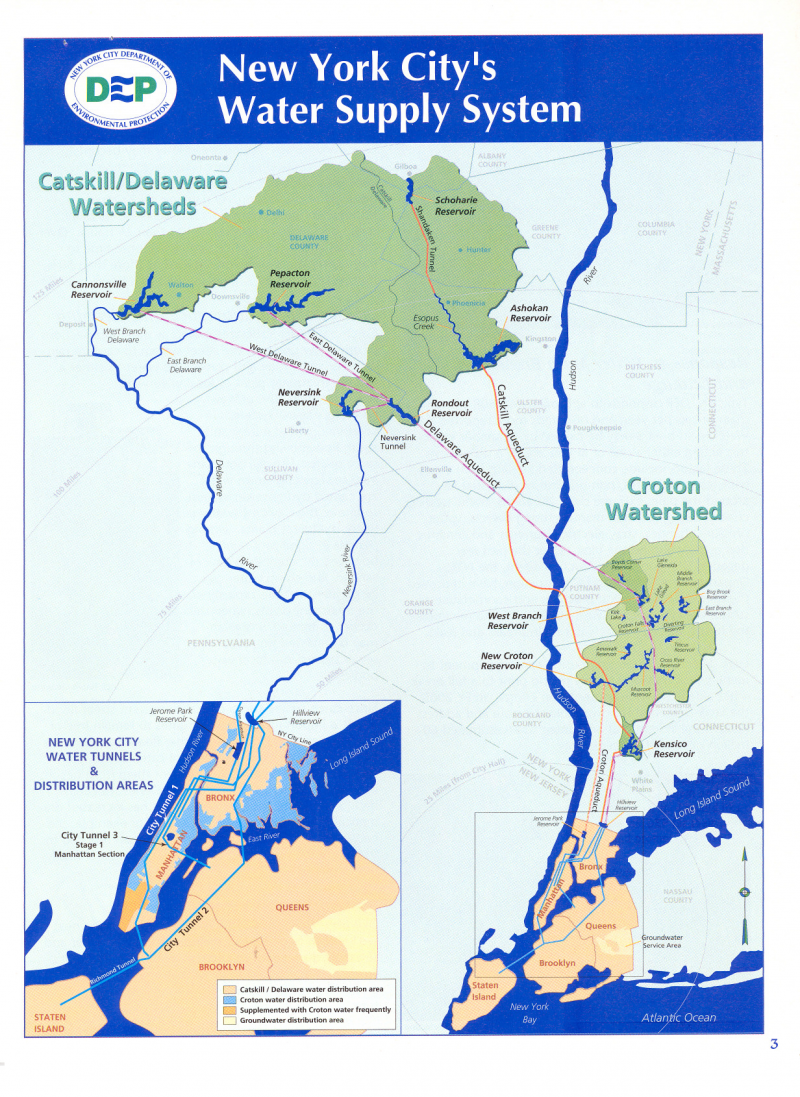
Foto: Source: NYC Department of Environmental Conservation
The NYC aqueduct system uses the same basic principle that the Romans used to bring water to their capital city: gravity.

Foto: The Ashokan Reservoir before construction began on the aqueduct. Source: NYPL
Only 5% of New York’s water needs to be pumped; the rest simply flows downhill.

Foto: Source: NYPL
But New York engineers had one thing the Romans didn’t: dynamite. It allowed construction workers to bury the tunnels underground instead of needing to construct elevated aqueducts that snaked around mountains.

Foto: Source: NYPL
The Catskill Aqueduct tunnels are 30 feet across at their widest points — enough to make men standing inside them look tiny.
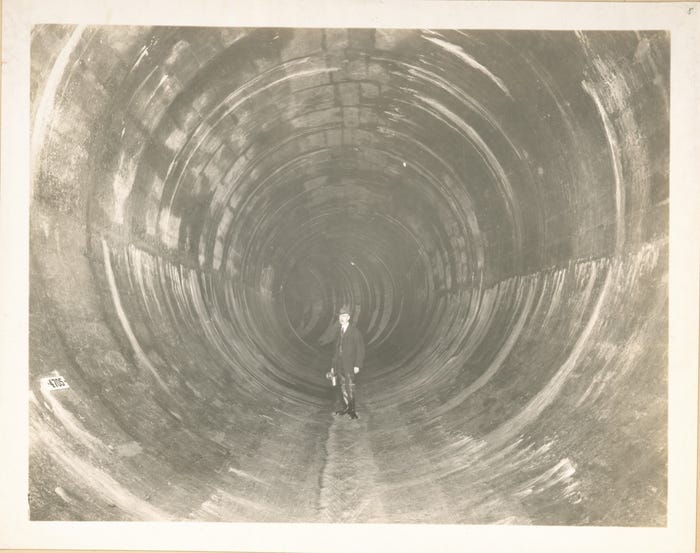
Foto: This tunnel was 16 feet 7 inches. Source: NYPL
To make them, workers first dug a trench as deep as the tunnel would be. They used steam shovels to dig, and dynamite when the rock needed persuading.
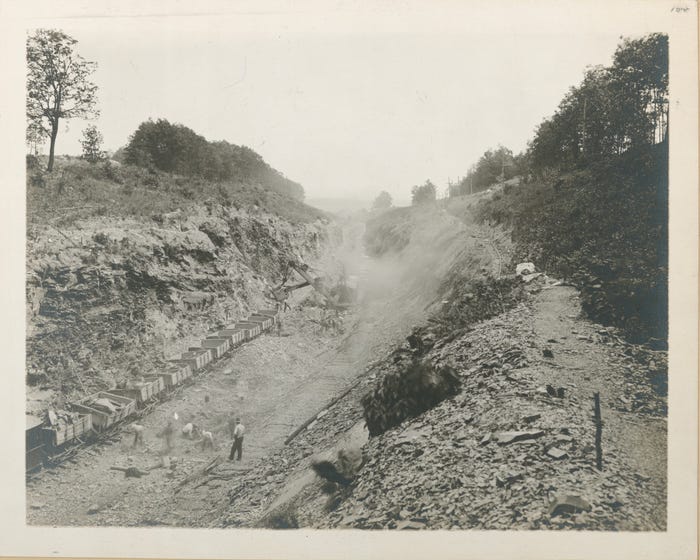
Foto: Source: NYPL
They filled the bottom of the trench with concrete, and then the sides.

Foto: Source: NYPL
The workers poured concrete on the top of the tunnel, using steel forms to make it circular. Then they covered the whole thing back up with dirt.

Foto: Source: NYPL
This method of construction required completely removing the vegetation on top of the tunnel. The city did plant 3 million trees around the two reservoirs that feed into the Catskill Aqueduct, though.

Foto: Source: NYPL
Source: Catskill Water Supply: A General Description and Brief History
To gather the surrounding rivers and streams into one water supply, enormous dams had to be constructed. The Ashokan Reservoir that resulted held 132 billion gallons of water.
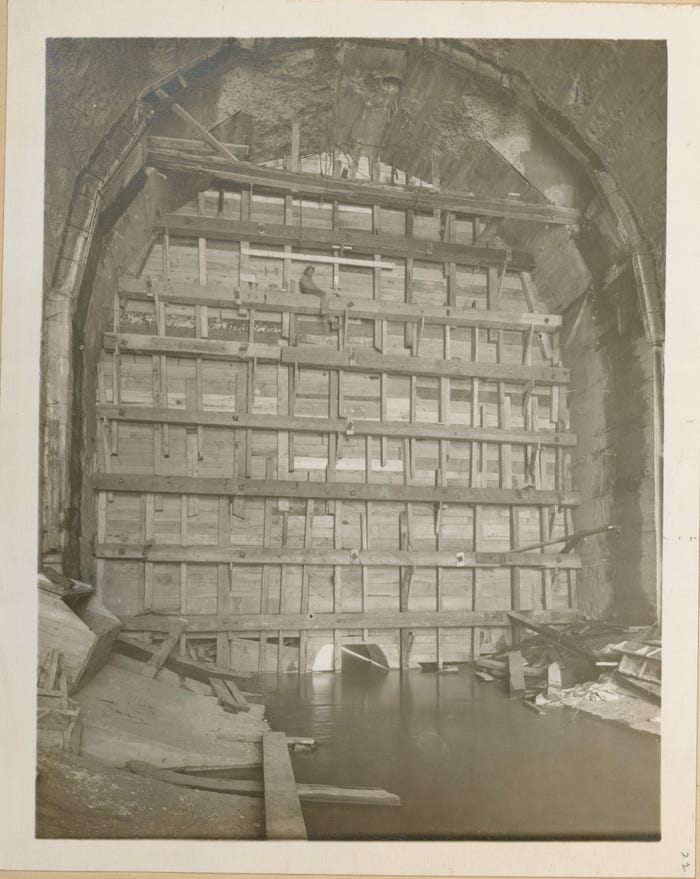
Foto: Source: NYPL
Source: Catskill Water Supply: A General Description and Brief History
While they did have the benefit of some electricity, workers still used horses for some projects, like pulling contraptions to flatten the earth.
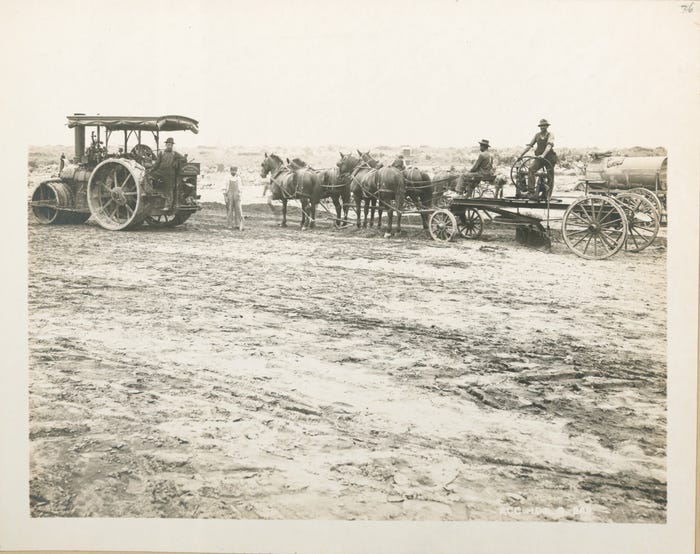
Foto: Source: NYPL
They also used this fun looking bucket pulley system to transport dirt.
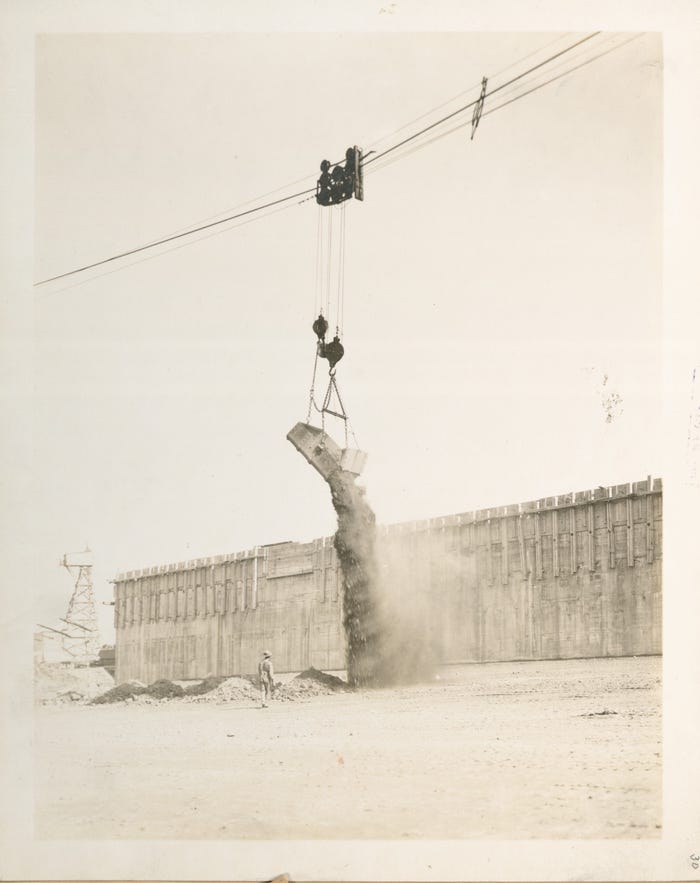
Foto: Source: NYPL
When the Catskill Aqueduct was completed, it could send 640 million gallons of water to New York City per day.
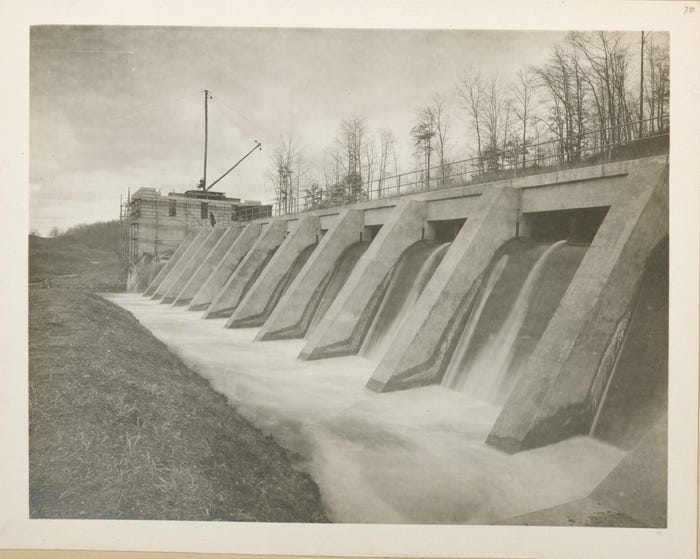
Foto: Source: NYPL
But today it only delivers about 400 million gallons on average per day, because microorganisms have built up on the miles of tunnel over the years, slowing the water flow. (The water gets treated before it reaches the city).
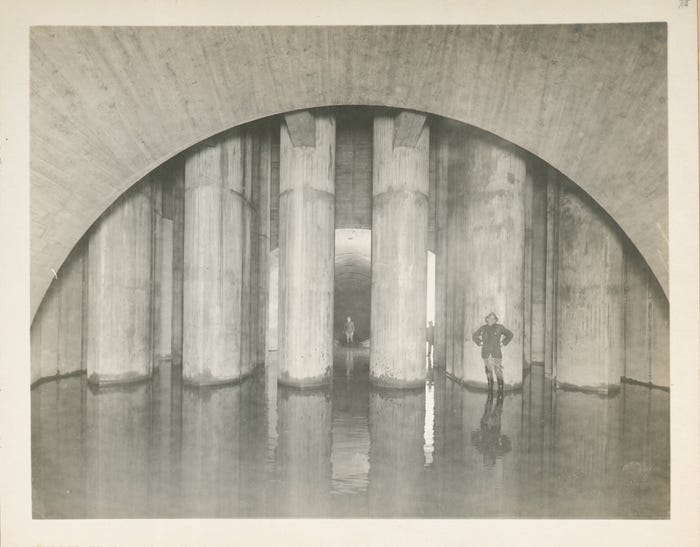
Foto: Source: NYPL
Source: NYC Water for the Future
The city is now cleaning up the Catskill Aqueduct so it can hopefully provide clean, fresh water to New York City for another 100 years.

Foto: Source: NYPL
Source: NYC Water for the Future
